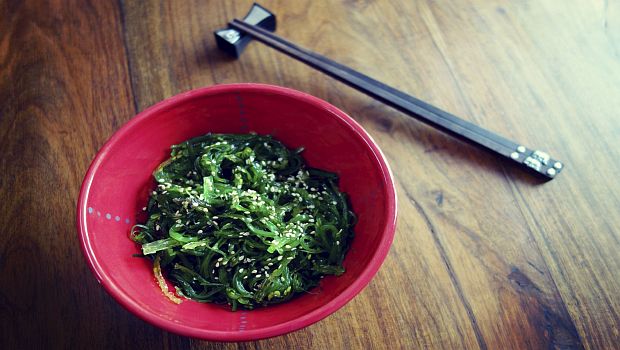Seaweed is on a mission. U.S. sales of seaweed snacks are already overtaking those of kale, according to New Nutrition Business. And the publications says that seaweed is one of those trends you should get in at day one given its opportunity as a new growth market for snacks. A new study also shows its anti-inflammatory effects.
October 9, 2015

Seaweed is on a mission. U.S. sales of seaweed snacks are already overtaking those of kale, according to New Nutrition Business. And the publications says that seaweed is one of those trends you should get in at day one given its opportunity as a new growth market for snacks.
“Launches of seaweed snack products are proliferating and sales outstrip those of kale, the trendy green vegetable that has benefited from a huge degree of hype since 2010 and has been embraced by young health-conscious urban consumers," said Julian Mellentin, director of New Nutrition Business. “Seaweed’s transition from the food fringes to mainstream will be propelled by snack products."
In the United States, retail sales of seaweed snacks were valued at more than $250 million in 2014, a year when market growth was around 3 percent, and the last two years have seen a surge in launches of snack products with seaweed.
Long a favorite of health-conscious consumers on the food fringes, seaweed’s naturally functional advantages—it’s a low-calorie source of protein and fiber, and it’s richer in trace minerals and vitamins than kale—are winning it wider attention.
In fact, a new study published in the journal Inflammation Research further investigated green seaweed’s (Caulerpa cupressoides var. lycopodium [CcL]) anti-nociceptive and anti-inflammatory effects (Oct. 1, 2015). CcL was injected locally into the rat paw to verify a possible pro-inflammatory outcome. CcL reduced the carrageenan-induced rat paw edema and neutrophilic infiltration. Immuno-histochemical analyses showed CcL (1 mg/kg) reduced the expression of several inflammatory markers, and it inhibited dextran and histamine-induced rat paw edema. Both effects were reversed by mucin inhibition. CcL (1 mg/kg) was ineffective for the treatment of serotonin- and bradykinin-induced rat paw edema.
The researchers concluded, “The anti-inflammatory action of CcL involves the inhibition of IL-1beta, TNF-alpa, IL-6 and COX-2 [inflammatory markers] expression and histamine H1 receptors. When locally administered, CcL exerts pro-inflammatory actions."
I’m sure you’ve seen several seaweed-based snacks while shopping at your local market. New Nutrition Business said the ingredient is popping up in all shapes and sizes such as seaweed-flavored rice chips. Check out New Nutrition Business’s new report, “The next big opportunity in snacking," for five steps to best position, market, price and distribute seaweed snacks in the United States and Europe.
You May Also Like




.png?width=800&auto=webp&quality=80&disable=upscale)